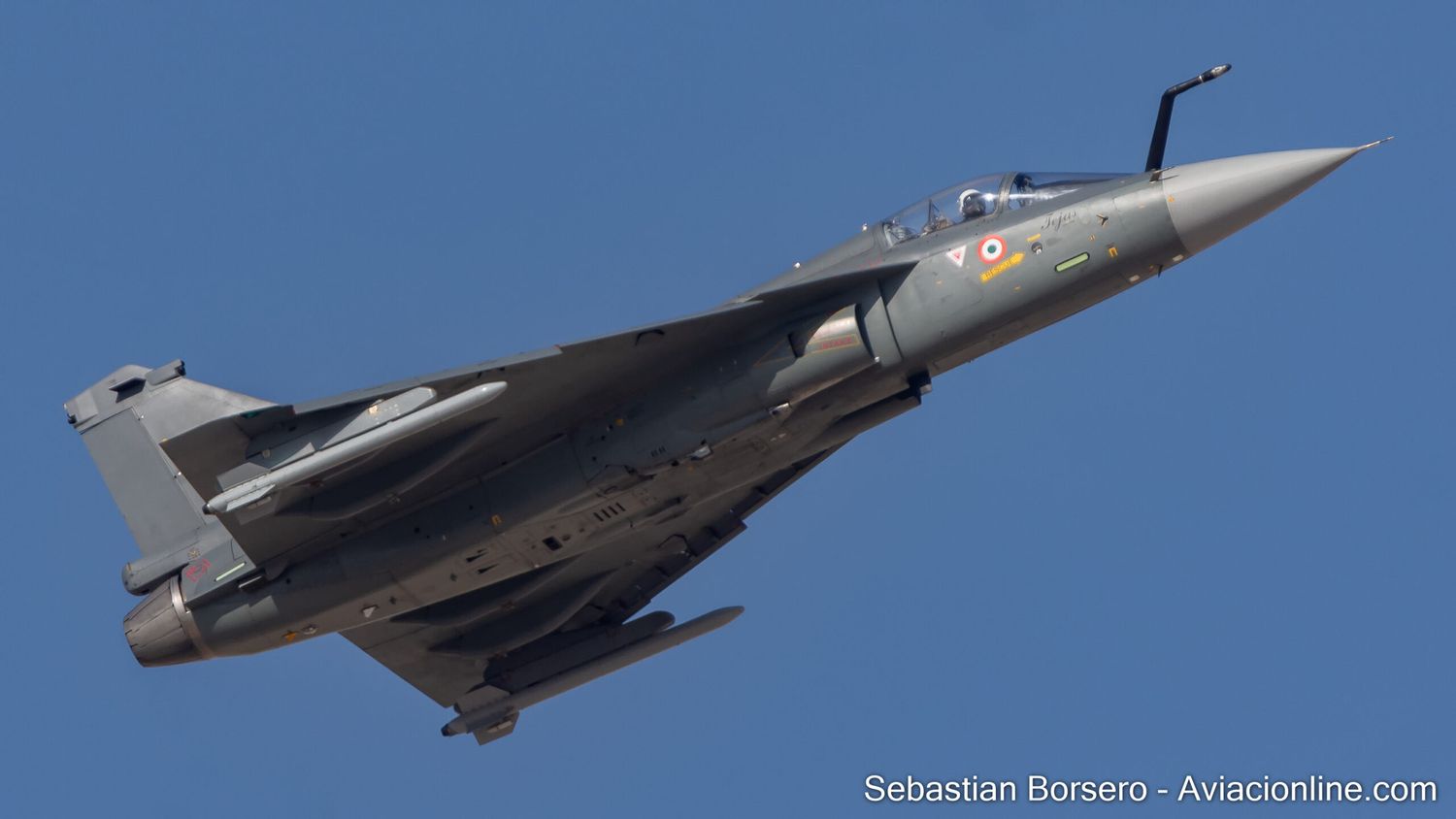India to replace two key components of British origin and increase the number of domestic parts for the Tejas Mk-1A
Hindustan Aeronautics Limited (HAL), India’s leading aerospace company, will phase out the percentage of imported components for the Tejas Mk-1A, including the replacement of the radar cone and in-flight refueling probe manufactured by British companies.

The recent announcement that the Indian Air Force (IAF) is considering placing an additional order for between 90 and 100 new LCA Tejas Mk-1A fighters (in addition to the 83 already contracted) will provide a decisive boost for the Indian aerospace industry to expand its share of indigenous defense products, decreasing external dependence and enabling it to boost its commercial attractiveness.
According to the Indian Defence Research Wing (IDRW) website, the IAF’s current fleet of 40 Mk-1 Tejas has an indigenization rate of 59.7%, and the much-improved Mk-1As (the first examples of which will begin to be delivered in March 2024) are already at 65%. But in the coming years, Indian industrial participation in the Tejas is expected to increase to 75% or more.
See also: India seeks to develop its own ejection seats
HAL is currently working on the replacement of the radome and the in-flight refueling probe, both produced by UK defense companies. Another key component of the aircraft that is also manufactured by a British company is the Martin Backer ejection seat, but according to IDRW, it will not be replaced by an Indian model (whose development is already underway) on the 83 Tejas Mk-1A acquired by the IAF.
The major «But» of Argentina’s interest in Tejas
As is well known, the Argentine Air Force (FAA) has shown its formal interest in the light fighter developed by HAL, and it is part of the negotiations between both countries to strengthen their military/strategic ties. And although Indo-Argentine relations are already showing significant results, such as the future incorporation of Argentina to the BRICS group (promoted by New Delhi), the British veto continues to hinder Buenos Aires from accessing the Indian fighter to recover its supersonic capability.

HAL recently stated that it is willing to replace British components for the FAA if it selects the Indian aircraft as its next fourth-generation fighter, but on condition that Argentina pays for the modifications. Plans to replace the radome and in-flight refueling probe of the Tejas Mk-1A with Indian components would make the realization of a hypothetical Argentine version of the fighter cheaper, but the substitution of the Martin Baker ejector seat by another of American origin, together with its adaptation and validation, would have to be paid by Buenos Aires, and that scenario seems very difficult to achieve in the short term.
In addition to the costs associated with removing the imported UK components from the Tejas, there is also the time it takes to integrate and ensure the correct operation of their replacements. And if it is true that the Argentine government intends to make a decision regarding the future supersonic fighter for the FAA before the end of President Fernandez’s term in December, HAL’s offer would not be in time to meet the requirements of no British components.

In this regard, the proposal that is being best positioned in the FAA, due to the financing, the number of aircraft involved and their quicker availability, is that of the Danish F-16s. As Aviacionline has learned, the agreement in Washington for the F-16 MLU is very advanced (but not the negotiations for the armament they would carry), which would leave New Delhi no time to present a better offer. Perhaps in the future the Argentine Air Force could consider the Tejas Mk2 as a replacement for its A-4ARs, because the current Mk-1A production variant cannot be exported to Argentina without London’s permission.


Comentarios
Para comentar, debés estar registrado
Por favor, iniciá sesión